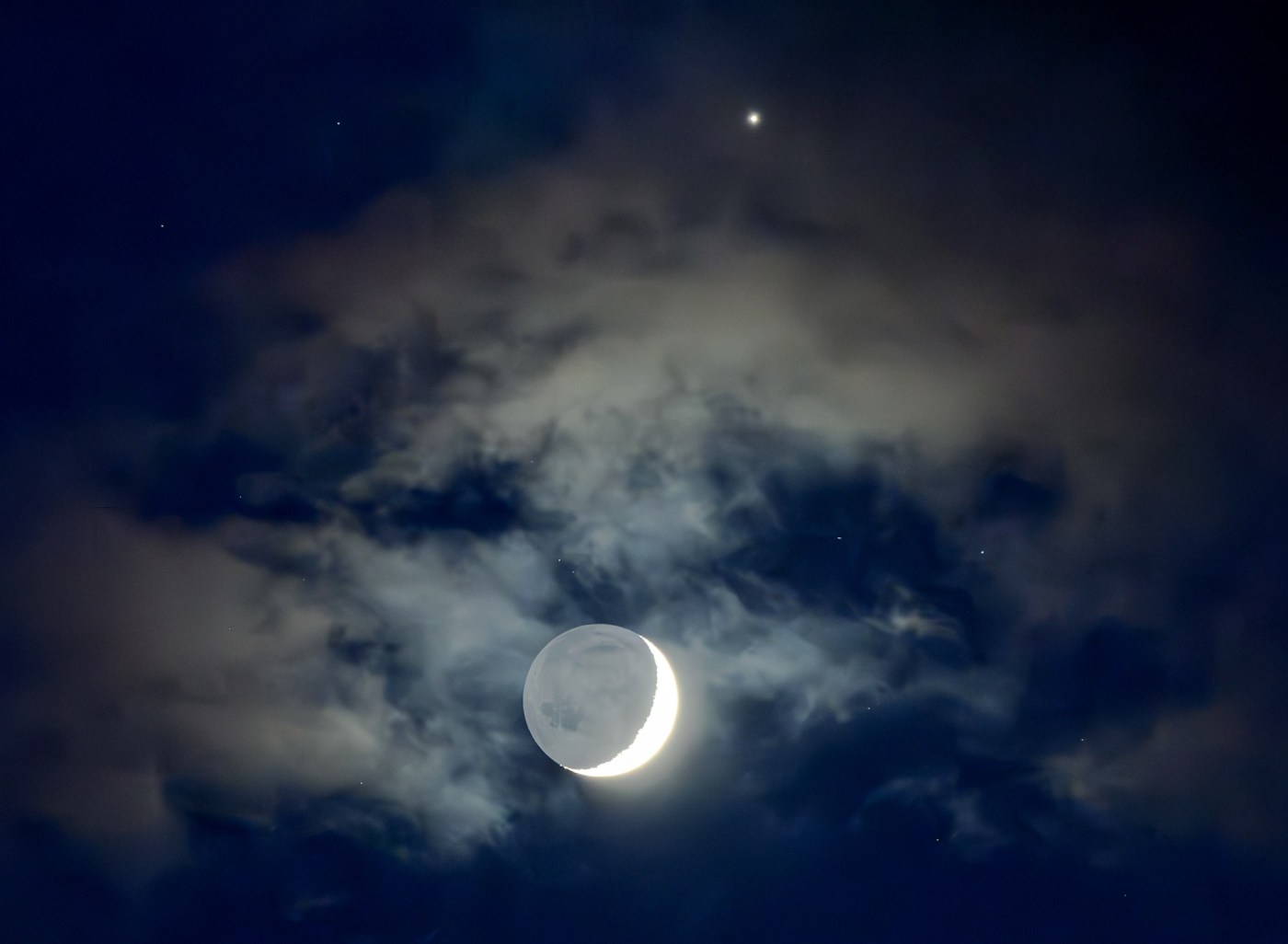
Stunning conjunction of Venus, crescent moon will be visible Saturday
DENVER — A remarkable sight will appear in the southwestern sky an hour after sunset Saturday evening when Venus appears very close to a thin crescent moon.
This celestial phenomenon is called a conjunction, which means two or more heavenly bodies appear very close to each other. The moon Saturday night will be 15% illuminated, while Venus will be close to the brightest it gets, according to Jeff Hunt, a retired Illinois planetarium director whose website (whenthecurveslineup.com) tracks interesting celestial events for amateur sky gazers.
The crescent moon may strike observers as slightly larger than normal. The moon will be at its monthly perigee — its closest approach to Earth in a given month — so Hunt is calling it a “super crescent moon.” Monthly perigee distances vary, but for this one, the moon will be 228,000 miles from Earth, 10,500 miles closer than its average distance.
The moon’s closest approach to Earth this year will be 221,726 miles, and its farthest distance will be 252,706 miles. Both will occur in November.
Related Articles
A newly discovered asteroid has a slim chance of hitting Earth in 2032
Are we all aliens? NASA’s returned asteroid samples hold the ingredients of life from a watery world
‘Bright and relatively easy to see’: The planets align for this astronomical event
Scientists detect chirping cosmic waves in an unexpected part of space
NASA’s stuck astronaut steps out on a spacewalk after 7 months in orbit
To photograph Saturday’s conjunction, Hunt recommends mounting a camera on a tripod and setting exposures for a few seconds. That could capture a dim reflection of “earthshine” on the portion of the moon that is dark. Mobile phones could yield good results if they are held steady.
The next celestial event of note will be a total lunar eclipse on the night of March 13-14. The partial eclipse, when the moon begins to turn red, will occur beginning at 11:09 p.m. The total eclipse will occur from 12:26 a.m. to 1:31 a.m.
This year’s super full moons will occur on Nov. 5 and Dec. 4.


